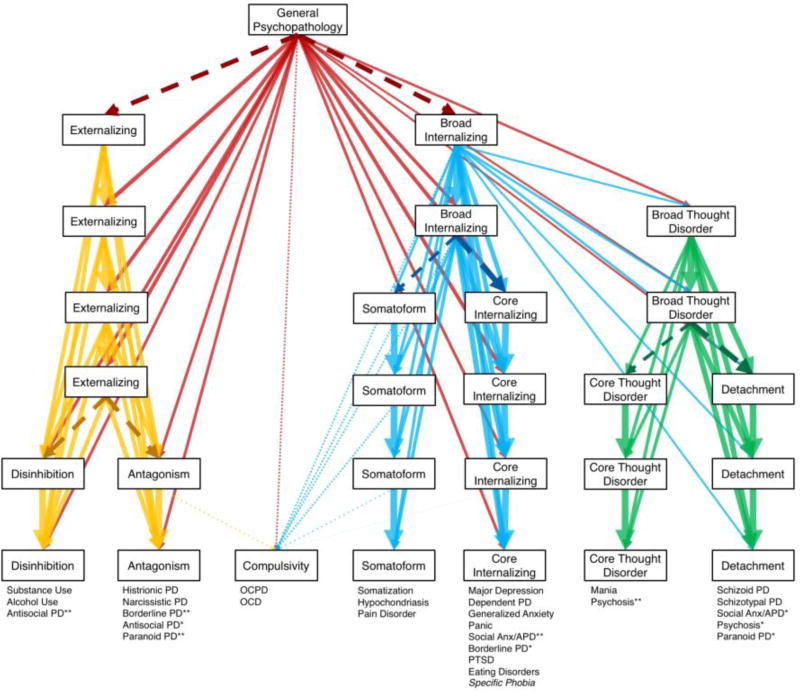Figure 1.
Bass-ackwards model elucidating the emerging hierarchical factors. All correlations ≥ .3 are shown except where components persist through multiple levels (e.g., correlations between externalizing on level two and level four are not shown). This format explicates the hierarchical structure of the analyses by depicting whether and to what extent lower-order and higher-order components are related across all levels of the structure. Line weights represent the strength of the correlations. Darker dashed lines represent the bifurcation of a component, based on correlations with emerging components ≥ .3 and ≤ .9. Dotted lines represent the loadings for compulsivity; none of the loadings for compulsivity were ≥ .3, so loadings ≥ .2 for levels one through five are shown, and ≥ .1 for level six, as these were the thresholds to display even the strongest loadings at those levels. Disorders are listed under the components on which they loaded ≥ .4, sorted by the strength of their loading at the seven-component level (strongest to weakest). Specific phobia is italicized because its primary loading was < .4.
*denotes disorders that loaded ≥ .4 on more than one component.
**denotes the component on which cross-loading disorders loaded most strongly.
Note. OCPD = obsessive-compulsive personality disorder, OCD = obsessive-compulsive disorder, PD = personality disorder, Social Anx/APD = social anxiety and/or avoidant personality disorder, PTSD = posttraumatic stress disorder. PD variables include subthreshold cases with one criterion less than DSM-IV thresholds.

